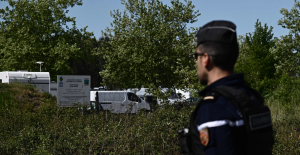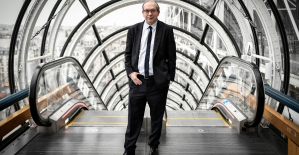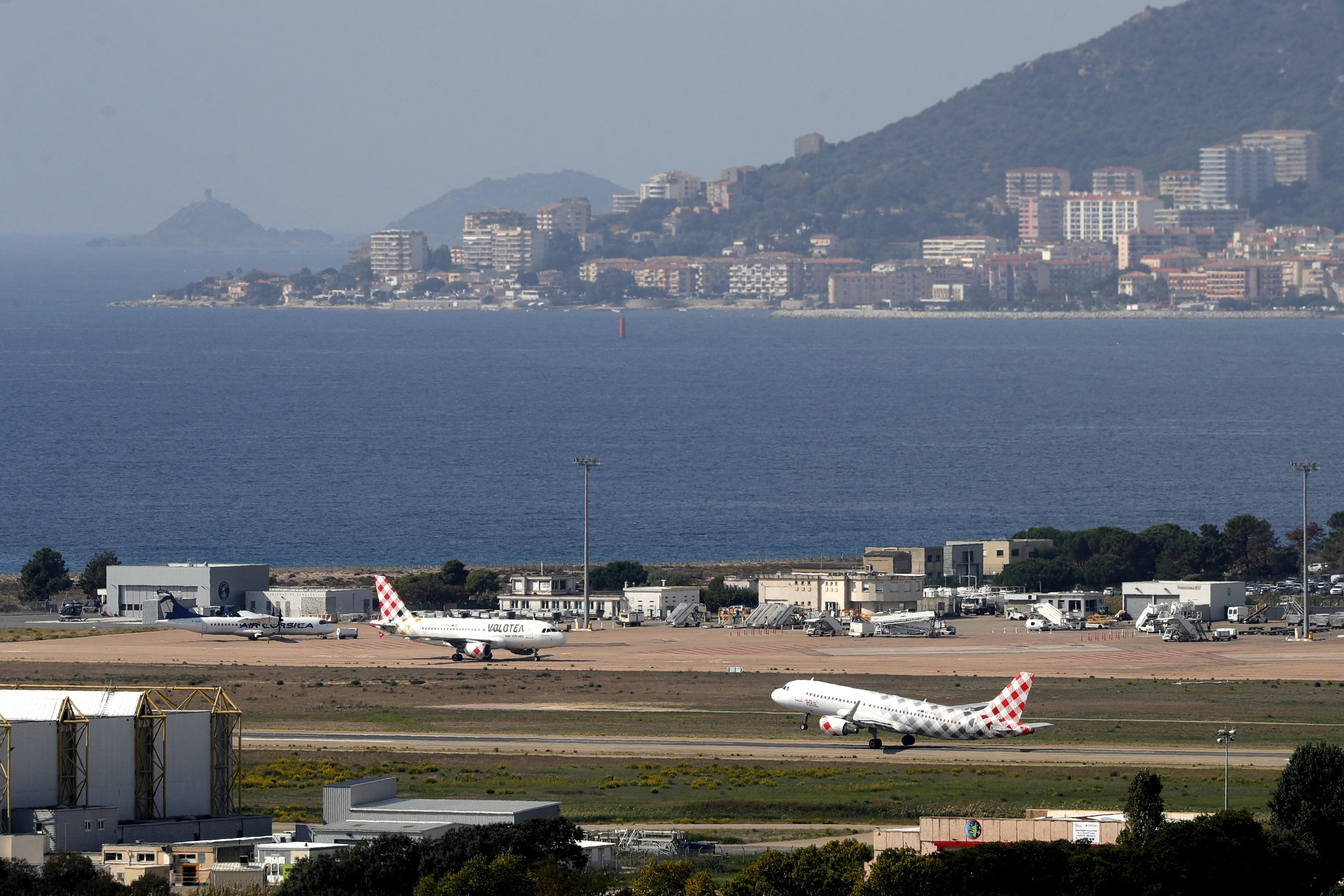The Tiefstack combined heat and power plant on the Elbe in the Billbrook district is standing still on this warm late summer day. It is switched off for the annual inspection, for technical checks and repairs. A few days later it is started again and then initially continues to be operated with coal. There are a few heaps of them on the Elbkai under the unloading bridge. Ships and barges bring the fossil energy from all over the world, from which heat is generated in Tiefstack for more than 100,000 Hamburg households, as well as electricity to be fed into the public grid.
But the coal era of the power plant should come to an end by 2030 at the latest: "The Tiefstack power plant will be converted from coal to natural gas and biomass," says Christian Heine, head of Hamburg's municipal energy works, during a tour of the extensive plant. "In addition, Tiefstack is getting an aquifer storage tank for heat storage." Construction of the underground hot water storage tank on the power plant site will begin at the end of September. In addition to the combined heat and power plant, there is also a so-called gas and steam power plant in Tiefstack for peak demand for district heating.
So far, Hamburger Energiewerke has been generating the district heating for a total of around 250,000 households largely from coal. The company wants to replace them with natural gas, the combustion of which releases significantly less of the greenhouse gas carbon dioxide. In the coming decade, sufficient renewable energy should be available to be able to do without fossil natural gas.
"As Hamburger Energiewerke, we operate around 850 kilometers of pipeline network in Hamburg and have a market share of around 22 percent in district heating," says Heine. "With one million tons of carbon dioxide a year - especially from the Wedel and Tiefstack power plants - we are the largest emitter in the city."
That is about to change: by 2030, the company wants to save up to 800,000 tons of carbon dioxide a year in heat supply. "Another 200,000 tons remain initially, due to the use of natural gas," says Heine. “However, this amount will also gradually disappear as a result of switching to other energy sources.” In the medium term, Hamburger Energiewerke will use natural gas not only in the Tiefstack power plant but also in the heating plants on Haferweg and in Hafencity, and also in the future thermal power plant on the Dradenau .
With Russia's war of aggression against Ukraine, the complex "heat transition" project is becoming even more complicated than it already is. The district heating supply by the Hamburger Energiewerke is not at risk, at least for the heating period of this winter and probably also of the coming winter, says Heine: "For the Wedel and Tiefstack power plants, we have so far used 50 percent coal from Russia. Due to the embargo, we have already completely replaced this coal with coal supply contracts from the USA, South Africa and Colombia.”
For the 2023/2024 heating period, too, the necessary coal supplies are "already largely under contract" to replace the Russian coal, which can no longer be imported into the European Union. When it comes to the supply of natural gas, Hamburger Energiewerke is one of the so-called “protected” customers. These are served preferentially when the Federal Network Agency has to determine in the event of an acute shortage which customers will be blocked from natural gas first. "We have also ordered 60,000 tons of heating oil for the 2022/2023 heating period, which can be used in various heating plants instead of natural gas," says Heine. The district heating supply for Hamburg is “secured as best as possible”.
The Hamburger Energiewerke want to replace coal as a fuel in the two large combined heat and power plants Wedel and Tiefstack with many measures at the same time: by using industrial waste heat; with heat pumps for the water of the Elbe, among other things; through so-called power-to-heat systems that generate district heating with electricity from renewable energies; with the help of two underground heat storage tanks in the company's two future "energy parks" on the Dradenau in the port and in Tiefstack; and by “green” hydrogen produced using electricity from renewable sources.
The Wedel thermal power station from 1965 is finally to be shut down in 2025 when alternative heat sources are available. Hamburger Energiewerke want to operate low-stack with natural gas on an interim basis and also with biomass in the long term. "In the future, we may also import biomass as residual and damaged wood," says Heine. The burning of fresh wood, on the other hand, is "vehemently ruled out". How quickly the city of Hamburg can in turn replace coal in the generation of district heating with natural gas depends on its price and availability. The German government is working hard to find new sources of natural gas as an alternative to Russian gas, for example in countries such as the USA, Canada, Australia and the Emirate of Qatar.
Far too little has happened on the heating market in Germany in recent decades to reduce emissions of gases that affect the climate. So far, the alleged “energy transition” has primarily been an “electricity transition”. According to the Federal Environment Agency, renewable energies – above all wind power and solar energy – contributed around 41 percent to covering energy requirements on the electricity market last year.
On the heating market – which, in addition to building heat and hot water, primarily includes industrial process heat – it was only 16.5 percent and in the transport sector just 6.8 percent. The need to catch up is huge, especially on the heating market, including in Hamburg: 51 percent of final energy consumption in the Hanseatic city is attributable to heating applications, around 30 percent to mobility and 19 percent to electricity consumption in business, administration and private households, according to calculations by the energy authority .
The "heat transition" in Hamburg is intended to contribute to climate protection and at the same time increase the security of supply. “Because of its high potential, the industrial waste heat in Hamburg must be used – waste heat from industrial plants, from waste incineration and the Dradenau sewage treatment plant. For us, this is the so-called 'unavoidable waste heat'," says Heine.
A waste heat potential of 350 megawatts was calculated for the large companies in the port alone: "That is the output of a medium-sized conventional power plant," says Heine. "We want to use this heat for the future aquifer storage on the Dradenau." In the long term, the waste heat from industry should also be climate-neutral if factories are also operated with energy from renewable sources in the future.
The aquifer storage in Tiefstack and on the Dradenau in the port are key elements for Hamburg's heat transition. In Tiefstack, two wells are sunk down to a layer of thermal water at a depth of 1,300 meters. Industrial waste heat is conducted through one of the boreholes into the aquifer and stored there for the winter.
The second well is used to retrieve the heat for feeding into the district heating network. The system is scheduled to start up in 2024 – deep underground, it has about the volume of the Elbphilharmonie, says Heine. A similar storage facility will be built on the Dradenau in the coming years, together with a new gas-fired power plant.
The Tiefstack aquifer storage facility is part of the North German real laboratory. In this network project, initiated and co-financed by the federal government, 53 partners from business, research and public administration work together in the north. They want to develop a new system that will help the participating federal states of Hamburg, Schleswig-Holstein and Mecklenburg-Western Pomerania to cover their energy needs largely from renewable energies from the middle of the next decade: "Industrial waste heat often did not seem to be economically usable in the past. It is now considered a valuable resource that can be used relatively quickly," says Mike Blicker in the visitor center of the Tiefstack power plant, the deputy coordinator of the North German real laboratory.
In 2018, the copper manufacturer Aurubis, together with the company EnerCity, commissioned a heat pipe that transports industrial waste heat from the Aurubis plant on the Veddel to eastern Hafencity as district heating. The two companies had invested 20 million euros in the project.
Now the next project is underway. "We want to invest another 97 million euros in our follow-up project, which we will implement together with Hamburger Energiewerke," says Christian Hein, who is responsible for implementing the sustainability strategy in the Aurubis Group. The federal government is providing financial support for both Aurubis district heating projects.
The planned second decoupling is currently the largest industrial heat project in Germany, says Hein: "The heat is generated in a climate-neutral manner through a chemical reaction in a secondary process of copper production, it is a so-called exothermic reaction in which no energy is supplied from outside." For the heating period The project should be on the market by 2024/25, supplying around 20,000 additional households with district heating and thereby saving 100,000 tons of carbon dioxide annually. The existing pipeline to Hafencity is already designed for more throughput.
Werner Beba, who is the coordinator of both projects, estimates that the North has a “five to eight year lead” over other German regions thanks to the North German Reallabor and its predecessor project NEW 4.0. Renewable energies, but also new approaches such as the use of industrial waste heat and ambient heat can be closely linked to the large consumption in the Hamburg metropolitan region.
In the heating market in particular, there is huge potential to do more for climate protection, says Beba, who works full-time as a professor at Hamburg University of Applied Sciences. Not only can energy be saved in buildings: "Buildings can also be used much more than before to generate energy."

 His body naturally produces alcohol, he is acquitted after a drunk driving conviction
His body naturally produces alcohol, he is acquitted after a drunk driving conviction Who is David Pecker, the first key witness in Donald Trump's trial?
Who is David Pecker, the first key witness in Donald Trump's trial? What does the law on the expulsion of migrants to Rwanda adopted by the British Parliament contain?
What does the law on the expulsion of migrants to Rwanda adopted by the British Parliament contain? The shadow of Chinese espionage hangs over Westminster
The shadow of Chinese espionage hangs over Westminster What High Blood Pressure Does to Your Body (And Why It Should Be Treated)
What High Blood Pressure Does to Your Body (And Why It Should Be Treated) Vaccination in France has progressed in 2023, rejoices Public Health France
Vaccination in France has progressed in 2023, rejoices Public Health France Food additives suspected of promoting cardiovascular diseases
Food additives suspected of promoting cardiovascular diseases “Even morphine doesn’t work”: Léane, 17, victim of the adverse effects of an antibiotic
“Even morphine doesn’t work”: Léane, 17, victim of the adverse effects of an antibiotic Collection of booklet A stalls in March
Collection of booklet A stalls in March Kering expects a 40 to 45% drop in operating profit in the first half
Kering expects a 40 to 45% drop in operating profit in the first half Smartphones, televisions, household appliances… MEPs adopt a “right to repair”
Smartphones, televisions, household appliances… MEPs adopt a “right to repair” Fintechs increasingly focused on business services
Fintechs increasingly focused on business services The standoff between the organizers of Vieilles Charrues and the elected officials of Carhaix threatens the festival
The standoff between the organizers of Vieilles Charrues and the elected officials of Carhaix threatens the festival Strasbourg inaugurates a year of celebrations and debates as World Book Capital
Strasbourg inaugurates a year of celebrations and debates as World Book Capital Kendji Girac is “out of the woods” after his gunshot wound to the chest
Kendji Girac is “out of the woods” after his gunshot wound to the chest The Court of Auditors scrutinizes the management and projects of the Center Pompidou
The Court of Auditors scrutinizes the management and projects of the Center Pompidou Skoda Kodiaq 2024: a 'beast' plug-in hybrid SUV
Skoda Kodiaq 2024: a 'beast' plug-in hybrid SUV Tesla launches a new Model Y with 600 km of autonomy at a "more accessible price"
Tesla launches a new Model Y with 600 km of autonomy at a "more accessible price" The 10 best-selling cars in March 2024 in Spain: sales fall due to Easter
The 10 best-selling cars in March 2024 in Spain: sales fall due to Easter A private jet company buys more than 100 flying cars
A private jet company buys more than 100 flying cars This is how housing prices have changed in Spain in the last decade
This is how housing prices have changed in Spain in the last decade The home mortgage firm drops 10% in January and interest soars to 3.46%
The home mortgage firm drops 10% in January and interest soars to 3.46% The jewel of the Rocío de Nagüeles urbanization: a dream villa in Marbella
The jewel of the Rocío de Nagüeles urbanization: a dream villa in Marbella Rental prices grow by 7.3% in February: where does it go up and where does it go down?
Rental prices grow by 7.3% in February: where does it go up and where does it go down? Europeans: “All those who claim that we don’t need Europe are liars”, criticizes Bayrou
Europeans: “All those who claim that we don’t need Europe are liars”, criticizes Bayrou With the promise of a “real burst of authority”, Gabriel Attal provokes the ire of the opposition
With the promise of a “real burst of authority”, Gabriel Attal provokes the ire of the opposition Europeans: the schedule of debates to follow between now and June 9
Europeans: the schedule of debates to follow between now and June 9 Europeans: “In France, there is a left and there is a right,” assures Bellamy
Europeans: “In France, there is a left and there is a right,” assures Bellamy These French cities that will boycott the World Cup in Qatar
These French cities that will boycott the World Cup in Qatar Football: VAFC supporters are ironic after their descent into National
Football: VAFC supporters are ironic after their descent into National Tennis: Carlos Alcaraz should play in Madrid
Tennis: Carlos Alcaraz should play in Madrid Football: victim of discomfort in the middle of a match in mid-April, Evan Ndicka will resume training with AS Roma
Football: victim of discomfort in the middle of a match in mid-April, Evan Ndicka will resume training with AS Roma Ligue 1: PSG almost champion, OM, shock for the C1… 5 reasons to follow an exciting evening
Ligue 1: PSG almost champion, OM, shock for the C1… 5 reasons to follow an exciting evening


















